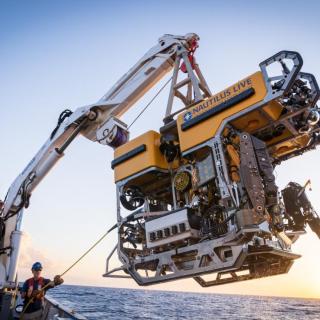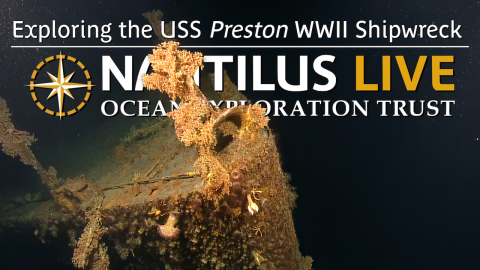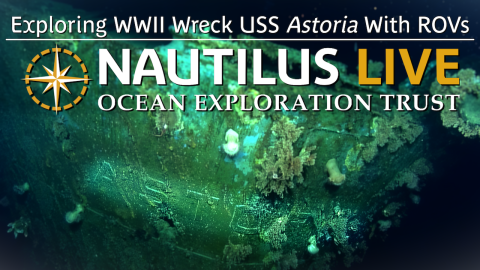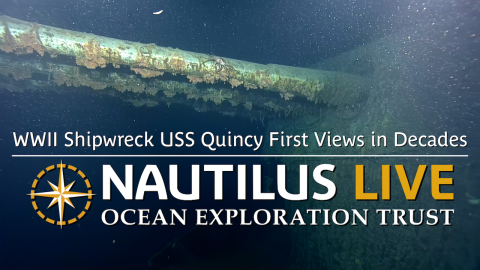Exploring the USS Laffey WWII Shipwreck
During the NA173 Maritime Archaeology of Guadalcanal expedition, the Corps of Exploration onboard E/V Nautilus has had the privilege of revisiting some of the shipwrecks discovered by our President, Dr. Robert Ballard, in the Iron Bottom Sound in 1992. One of those wrecks is the USS Laffey, a Benson-class destroyer that survived the Second Battle of Savo Island in October but sank southwest of Savo Island during the First Naval Battle of Guadalcanal on November 12, 1942. In this highlight video, you’ll learn more about the USS Laffey’s history and examine its structure, including torpedo tubes, range finders, and even a peek inside the bridge.
During the NA173 Maritime Archaeology of Guadalcanal expedition, the international team utilized the remotely operated vehicle and telepresence systems of E/V Nautilus, in combination with the mapping capabilities of uncrewed surface vehicle DriX, to conduct non-invasive archaeological surveys of cultural heritage sites in the Iron Bottom Sound. This expedition is supported by NOAA Ocean Exploration via the Ocean Exploration Cooperative Institute. This exploration is made possible by the expertise, support, and collaboration of many partners, including NOAA Ocean Exploration, U.S. Naval History and Heritage Command, Solomon Islands government, University of New Hampshire Center for Coastal and Ocean Mapping/Joint Hydrographic Center, University of Rhode Island, and Japanese, Australian, and New Zealand archaeological colleagues.

Maritime Archaeology of Guadalcanal: Iron Bottom Sound
Located in the Solomon Islands between the islands of Guadalcanal, Savo, and Nggela, Iron Bottom Sound was the stage of five major naval battles between August and December 1942 which resulted in the loss of over 20,000 lives, 111 naval vessels, and 1,450 planes. These underwater cultural heritage sites now rest on the seafloor offshore Honiara in a confined area less than 25 nautical miles wide, 40 nautical miles long, and 1,400 meters deep.



